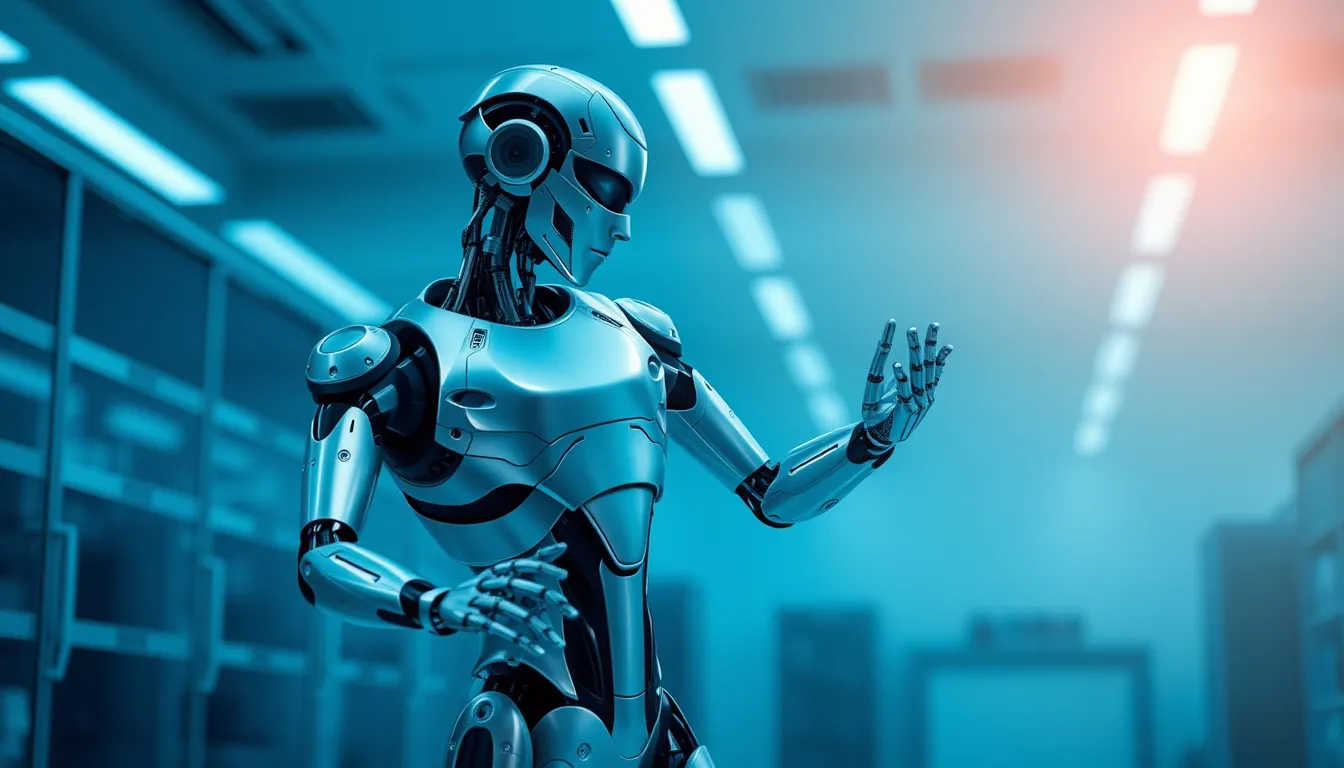Now Reading: AI in Healthcare Diagnostics: Boosting Patient Care
-
01
AI in Healthcare Diagnostics: Boosting Patient Care
AI in Healthcare Diagnostics: Boosting Patient Care

AI in Healthcare Diagnostics: Boosting Patient Care
Introduction
The integration of artificial intelligence (AI) in healthcare diagnostics is transforming patient care and shifting the paradigms of medical image analysis. In recent years, AI in healthcare diagnostics has evolved from theoretical applications to practical solutions that are revolutionizing disease detection and patient outcomes. This article explains the significant role of AI in improving diagnostic accuracy, expediting patient diagnosis, and enhancing overall healthcare management.
What is AI in Healthcare Diagnostics?
AI in healthcare diagnostics involves using advanced algorithms and machine learning techniques to analyze complex medical data. These technologies assist clinicians by interpreting diagnostic images such as X-rays, MRIs, and CT scans and by monitoring patient data. Using powerful data analytic tools, AI is able to identify patterns that may escape human detection, which contributes to early disease intervention and improved patient care.
Benefits of AI in Healthcare Diagnostics
- Improved Diagnostic Accuracy: AI systems can process vast amounts of data swiftly, delivering more accurate results than traditional methods.
- Faster Decision Making: Automated image analysis and triaging reduce wait times, ensuring patients receive prompt medical attention.
- Enhanced Disease Prediction: AI models analyze historical and real-time data to predict health risks, providing opportunities for early intervention.
- Optimized Resource Allocation: Efficient data management and automated processes help hospitals optimize operational costs and resource usage.
How AI is Transforming Medical Imaging
Advanced AI algorithms are revolutionizing medical imaging by integrating seamlessly with diagnostic tools. When machine learning is applied to imaging technology, the systems can detect subtle abnormalities that might be overlooked by human eyes. Studies reveal that implementing AI in healthcare diagnostics significantly reduces diagnostic errors and improves patient outcomes. For updated news and deeper insights into technological advancements, you can explore resources like TechCrunch.
Improving Diagnostic Accuracy Through AI
One of the core benefits of AI in healthcare diagnostics is the improved accuracy in reading complex diagnostic images. AI algorithms, when implemented with imaging systems, excel at identifying patterns indicative of early-stage diseases such as cancer, cardiovascular disorders, and neurological conditions. This enhanced diagnostic capability not only increases the chances of positive patient recovery but also contributes to reducing overall healthcare expenses. The reliability of AI-powered second opinions often helps confirm or refine diagnoses, supporting healthcare professionals in critical decision-making processes.
Challenges and Future Directions
Despite its advances, AI in healthcare diagnostics faces several challenges:
- Data Privacy: Sensitive health data requires rigorous adherence to privacy laws and security measures.
- System Integration: Incorporating AI into existing legacy systems demands significant time and investment.
- Extensive Training: Healthcare professionals must be educated on the capabilities and limitations of AI tools.
- Regulatory Hurdles: Continuous regulatory updates and approvals are required to ensure safety and efficacy.
Looking into the future, experts foresee the integration of AI with Internet of Things (IoT) devices that could offer continuous monitoring and real-time diagnostics. This integration is expected to pioneer developments in personalized medicine and further reinforce AI’s role in disease prediction.
The Role of AI in Disease Prediction
Beyond its utility in interpreting imaging, AI is also pivotal in disease prediction. By analyzing patient histories, genetic markers, lifestyle factors, and other data, AI systems can forecast potential health risks, thereby supporting proactive healthcare measures. These predictive models enable earlier planning and intervention, which are essential to mitigating severe health conditions. Such advances make AI indispensable for modern medical diagnostics and preventive healthcare strategies.
Practical Advice for Healthcare Providers
- Evaluate AI tools based on clinical needs and compatibility with existing systems.
- Offer comprehensive training to staff on the operation and benefits of AI technologies.
- Implement continuous quality improvement programs to measure AI effectiveness.
- Stay abreast of new guidelines and regulatory changes affecting AI in healthcare.
- Collaborate with technical partners who provide robust support and integration services.
Conclusion
AI in healthcare diagnostics is more than just a futuristic vision—it is a tangible reality that is revolutionizing medical practice. The convergence of AI technology with traditional diagnostic methods is enhancing accuracy, optimizing clinical workflows, and ultimately improving patient outcomes. As these innovations continue to evolve, healthcare providers must embrace AI-powered solutions to benefit from faster, more accurate, and more efficient diagnostics.
For further insights into the evolving role of AI in healthcare, consider visiting the official website of the World Health Organization, where you can find comprehensive resources and updates on global health as it relates to emerging technologies.
By adopting AI, the medical field continues to progress towards a future where precision, proactive disease management, and patient-centric care are the standard.

























